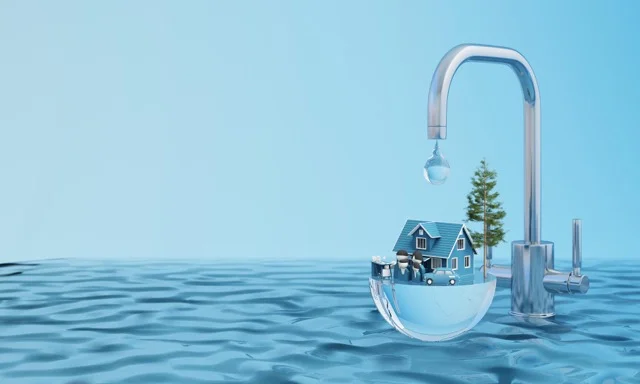All about Reclaim Waste
All about Reclaim Waste
Blog Article
The 6-Minute Rule for Reclaim Waste
Table of ContentsThe smart Trick of Reclaim Waste That Nobody is DiscussingThe 4-Minute Rule for Reclaim WasteNot known Factual Statements About Reclaim Waste Reclaim Waste Fundamentals ExplainedThe Best Guide To Reclaim Waste
Domestic sewage waste refers to the waste and items from a residential septic container. The proper management and disposal of domestic sewer waste call for fluid waste to be transferred to a sewer treatment plant where the correct approaches and equipment are applied to cleanse and dispose of waste.
Commercial waste commonly includes prospective dangers, such as combustible products or a blend of fluid and strong waste items, and needs an advanced and thorough disposal procedure. The disposal of business waste typically entails the filtration of waste prior to transport to make sure secure and proper disposal. Industrial waste is produced from by-products and runoff of commercial procedures and production.
This type of waste can not use the exact same sewer monitoring transportation or procedures as septic or commercial fluids. The industrial waste administration process calls for the assessment and testing of liquid waste prior to it goes through the disposal procedure (liquid waste disposal melbourne). Overflow waste is the fluid waste that comes from drainage and excess stormwater in highly inhabited areas or cities
Overflow waste can trigger contamination and flooding if not dealt with correctly. Find out more about sewer cleansing and waste monitoring. Making sure appropriate waste administration can stop catastrophes and lower ecological injury. Both people in residential setups and experts in business or manufacturing sectors can gain from comprehending the processes and regulations of liquid waste administration.
Excitement About Reclaim Waste
Contact PROS Providers today to find out about our waste management and disposal solutions and the correct methods to look after the liquid waste you generate.
(https://filesharingtalk.com/members/604691-reclaimwaste1)Do you recognize what happens to your water when you end, purge the commode or drain pipes the washing maker? No? Well, it deserves knowing. This so-called 'wastewater' is not just a crucial resource however, after therapy, will be launched to our land, rivers or the ocean. Used water from bathrooms, showers, baths, kitchen area sinks, laundries and industrial procedures is recognized as wastewater.

water used to cool down machinery or tidy plant and equipment). Stormwater, a form of wastewater, is runoff that streams from agricultural and urban areas such as roofing systems, parks, yards, roadways, courses and rain gutters right into stormwater drains pipes, after rainfall. Stormwater flows untreated straight to regional creeks or rivers, ultimately reaching the ocean.
The Buzz on Reclaim Waste
In Queensland, the majority of wastewater is dealt with at sewage therapy plants. Wastewater is transferred from domestic or commercial sites via a system of drains and pump terminals, known as sewerage reticulation, to a sewer therapy plant.
The Division of Natural Resources encourages city governments regarding managing, operating and keeping sewage systems and treatment plants. In unsewered areas, city governments may require householders to install specific or house sewage therapy systems to deal with domestic wastewater from bathrooms, kitchen areas, bathrooms and laundries. The Department of Natural Resources authorises using household systems when they are verified go to my site to be effective.
In some new communities, therapy of some stormwater to remove litter, sand and crushed rock has started using gross toxin catches. Wastewater therapy takes place in 4 stages: Removes solid issue.
Wastewater after that streams right into big tanks where solids work out and are gotten rid of as sludge. Grease and scum are skimmed from the surface area. Utilizes little living microorganisms referred to as micro-organisms to damage down and get rid of continuing to be liquified wastes and great particles. Micro-organisms and wastes are included in the sludge. Removes nitrogen and phosphorus nutrients that might cause algal blooms in our rivers and threaten water life.
Excitement About Reclaim Waste
Nutrient elimination is not available at all sewage therapy plants due to the fact that it calls for costly specialised equipment. Clear liquid effluent produced after therapy might still include disease-causing micro-organisms - liquid waste disposal.

The majority of wastewater moves into the sewerage system. Under the Act, regional federal governments provide authorizations and licences for environmentally relevant activities (ERAs) including wastewater releases that may have a regional influence.
What Does Reclaim Waste Mean?
Otherwise, examples are considered lab evaluation. Commonly lots of tests are needed to develop the degrees of each of the different pollutants such as oils, hefty steels and pesticides in water. Surveillance provides valid info about water top quality and can validate that permit problems are being fulfilled. The details gotten with surveillance provides the basis for making water top quality decisions.
Report this page